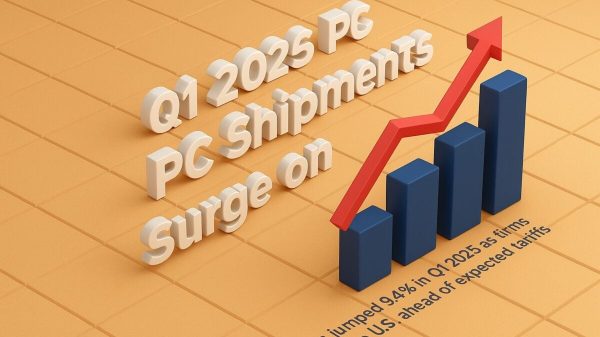By Gergely Szakacs and Karol Badohal
WARSAW (Reuters) – Poland’s NATO-leading surge in defence spending is raising budget concerns because it will bake in higher long-term expenditure on its military – even as Warsaw concedes it faces revenue shortfalls in its budget this year.
Central Europe’s largest economy is on track to lead NATO in terms of defence spending relative to the size of its economy for the second year in 2024 based on NATO estimates.
Outlays are projected to rise even further to 4.7% of GDP next year, part of a wider European drive to bolster defence capabilities following Russia’s 2022 invasion of Ukraine.
Poland’s $35 billion defence bill this year could surpass that of its ex-Communist central European and Baltic neighbours combined – not to mention that of much larger economies such as Italy, which has long undershot a NATO target of defence spending of at least 2% of gross domestic product.
Prime Minister Donald Tusk’s government says defence contracts signed before it took power in late-2023 may have contributed to a fiscal hole worth some 12.5% of Poland’s projected 2025 GDP due to underestimated long-term obligations.
Deputy Defence Minister Pawel Bejda told parliament earlier this month that the current government “will either find these (underestimated) funds or will have to abandon some tasks,” adding it did not currently intend to shelve spending plans.
Polish officials have cited a $4.6 billion deal to buy 32 Lockheed Martin (NYSE:LMT) F-35 fighter jets as an example where lifetime costs could exceed that reflected in the headline contract value.
Former Defence Minister Mariusz Blaszczak called the accusations a “political attack,” and “diverting attention from slowing the modernisation of Poland’s armed forces.” Poland’s two main parties are at loggerheads ahead of a key presidential election next year.
Asked whether Poland has incorporated longer-term defence-related expenses into its fiscal targets, the Finance Ministry said the structure of the national budget in any given year depended on current financing needs.
“Poland’s acquisition of new military platforms at scale will lead to significantly higher costs to maintain this equipment over the long-term,” Seamus P. Daniels, a fellow at the Center for Strategic and International Studies said of Poland’s equipment purchases, including from U.S. and South Korean suppliers.
Citing Pentagon figures, he said operating and sustainment expenses account for 70% of a military system’s lifetime cost on average – essentially committing Poland to spending billions more on its newly acquired equipment.
REVENUE SHORTFALL
U.S. Department of Defense estimates cited in an April report by the U.S. Government Accountability Office put the lifetime cost for the much larger U.S. F-35 fleet at over $2 trillion through 2088.
For every $1 spent on buying F-35 aircraft, another $3.575 in sustainment costs will occur over the lifetime of the U.S. fleet based on Reuters calculations, although the GAO said Poland’s costs could be different.
“Poland’s decisions on how to use the F-35, and how long they plan to use it may vary from the U.S. That could lead to very different lifecycle costs,” GAO Defense Capabilities and Management Team Director Diana Maurer said.
Lockheed Martin declined comment on Poland’s F-35 costs, saying they depended on several factors, such as the choice of weapons and delivery timespans among others.
But spending is just part of the problem: the government has forecast a $10 billion shortfall in revenue this year, roughly the equivalent to what Poland plans to fork out on 96 Apache attack helicopters.
Polish debt levels of around 50% of GDP are much lower than in euro zone members France and Italy. However, it is unclear how far Poland could ramp up borrowing before financial markets start pushing up borrowing costs, or spreads on government bonds widen.
Its government spending as a percentage of the economy posted one of the fastest rises in the EU last year and at 46.7% of economic output it was also the second highest since Poland joined the bloc in 2004.
‘AMBITIOUS PROJECTIONS’
Saddled with higher defence and social spending, Fitch Ratings said it was important that Poland implements a solid medium-term plan to cut its deficit and stabilise debt levels.
S&P Global said a 2025 presidential ballot and any potential shortfalls compared to “ambitious revenue projections” could complicate efforts to meet EU fiscal targets.
Poland’s military has become NATO’s third-largest by personnel this year behind the U.S. and Turkey, while its share of equipment spending has eclipsed both a 20% NATO guideline and U.S. spending rates in the past years.
“The uplifts in spending have placed considerable pressure on Poland’s finances as the country struggles to close its deficit,” said Fenella McGerty, senior fellow for Defence Economics at the International Institute for Strategic Studies.
“This will inhibit further increases at the top level, while within the defence budget, major purchases will consume a significant amount of spending, squeezing funding for other programmes.”
The Polish Finance Ministry, the Polish Ministry of Defence and NATO officials did not provide projections on the long-term financial cost of Poland’s current rate of equipment purchases.
“Whilst all Allies have agreed to spend a minimum of 2% of GDP on defence, some will need to spend more, for example to modernise their armed forces for the future,” NATO spokesperson Farah Dakhlallah said.
($1 = 3.9788 zlotys)

































